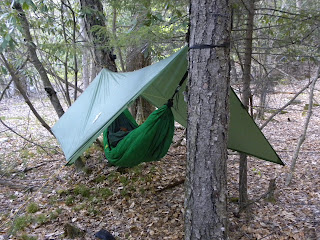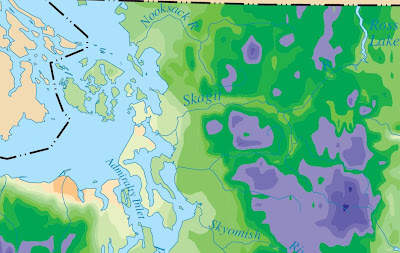 |
| Perry Creek meadows 8/6/11 |
So, we did a lot of car camping with dayhikes up high on to the snowline. We did more hikes off the Mountain Loop "Highway" and around Darrington this summer. We did not drive over to the Methow country to hike in or near the Pasayten like we normally do. Weather finally turned hot and summery in late August and much of September. Wildflowers that normally bloom in late July and early August during a normal year bloomed in late August and September. Flies were bad and persisted well into September. There was so much snow above 4000 feet elevation this year, I filled a cooler with snow from a small patch of snow on the side of a high elevation, old logging road! High elevation hikes like Ptarmigan Ridge on Mt Baker probably didn't even melt out at all.
Since we car camped this year on weekends and on a week off in October, we have our car camping technique worked out. The iron tripod and big pot is great for boiling a lot of water for dishes and washing up. We bought a folding table with a built-in sink, hanging wall and table for camping where there's no picnic table. It's great to use as a portable kitchen. In early October, I bought a Great Northern Camp Stove (wood). We used in under a rainfly with the chimney on the side of the rain fly which seemed safe. I have also used it under the awning of a canvas Baker tent. It needs a hand bellows. Wood must be small and dry. I could only keep the fuel burning and heat coming with the door open. It requires trial & error and practice to use correctly. I still have yet to use it with the Baker tent in the middle-front. It should work best at that location since heat should get entrapped in the tent.
We saw way too much irresponsible pooping this summer. The lazy, thoughtless pooping in the woods is getting bad. Every place we camped this summer we saw unburied human feces and stained toilet paper on tent pads, behind trees next to campsites and on rocky beaches next to running water. On Segelsen Ridge near Darrington, we turned down an old logging road spur and a guy popped up from squatting on the side of the road and waved us off. This idiot was taking a dump on the side of the road. Someone doing that probably isn't burying it.
Our Australian shepherd died in mid July of old age/cancer. He was 11. We originally planned on holding off backpacking until late August and September because of lingering snowpack. But, we got a Llewellen setter puppy in late August so had to stick with car camping and day hiking. At about 12-14 weeks the puppy could only hike a few miles. At about 4 months he could hike most of the day. At 5 months he can hike like an adult dog and I've even taken him chukar hunting.
September we hunted grouse in mornings and evenings and hiked during the day. It's been the poorest year for grouse since I started hunting them in 1999. More on that later. I have a rule that I only camp when there's 10 hours of daylight. At the latitude of Washington state, that means no camping from about Halloween until about February 12th. I may bend my 10 hour rule is the wood stove and canvas tent take a bite out of the long winter night. I'm looking forward to camping again in February.
















